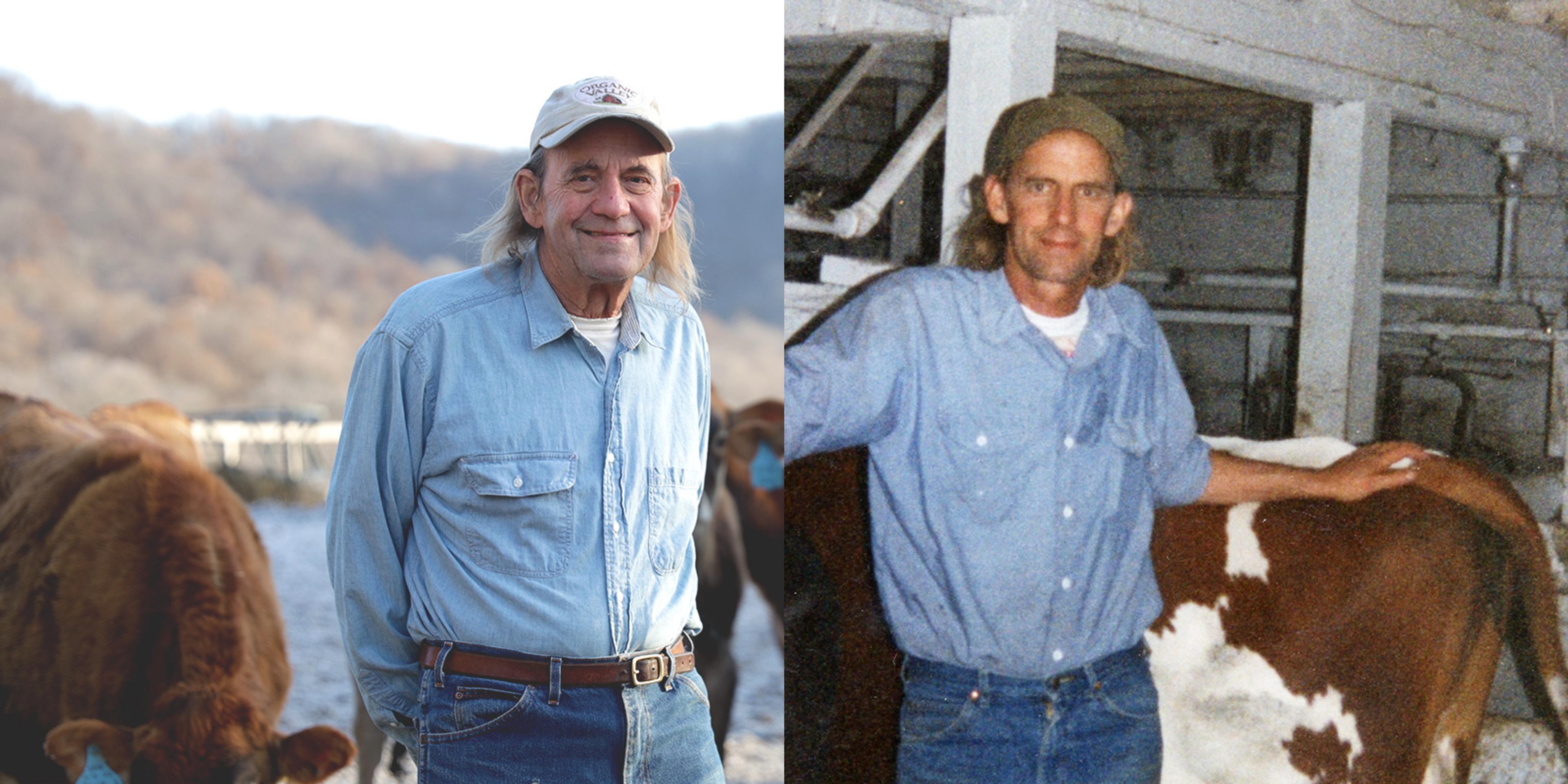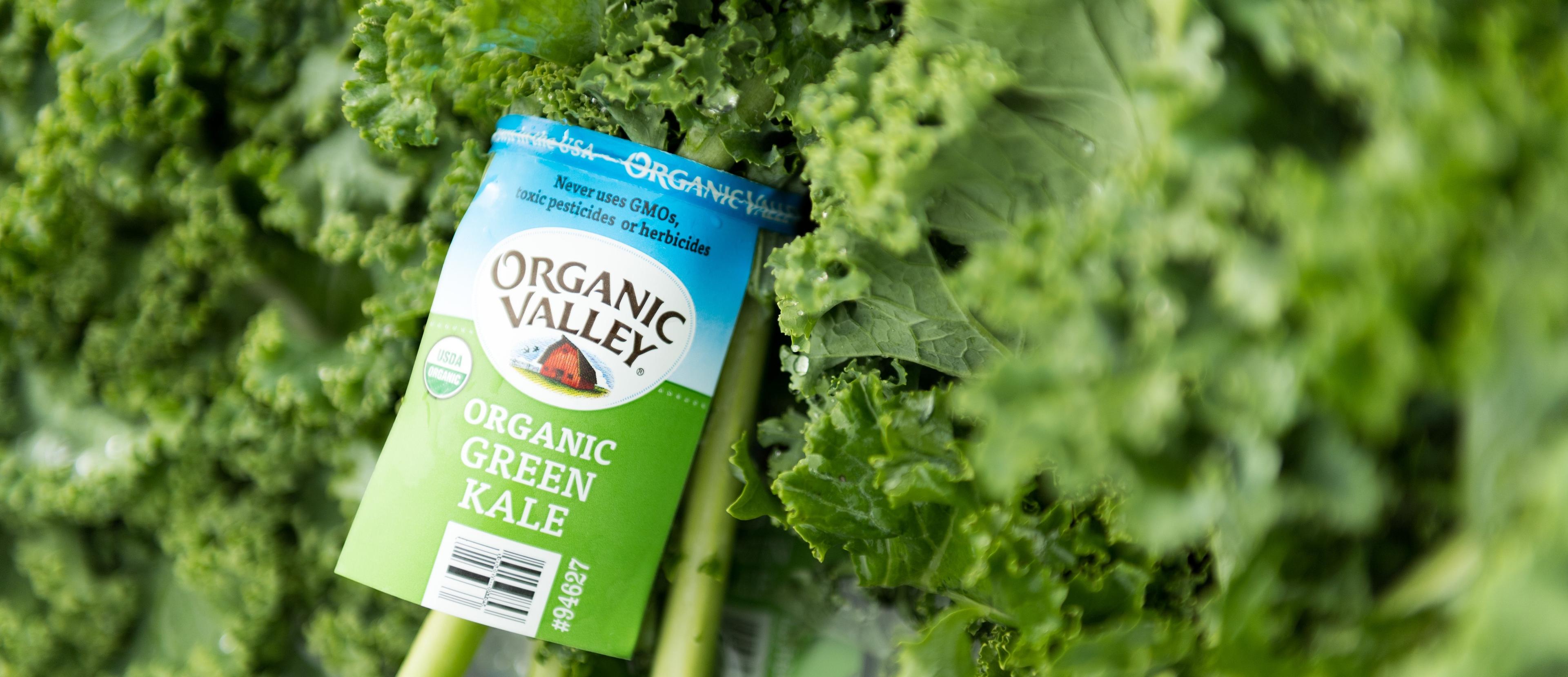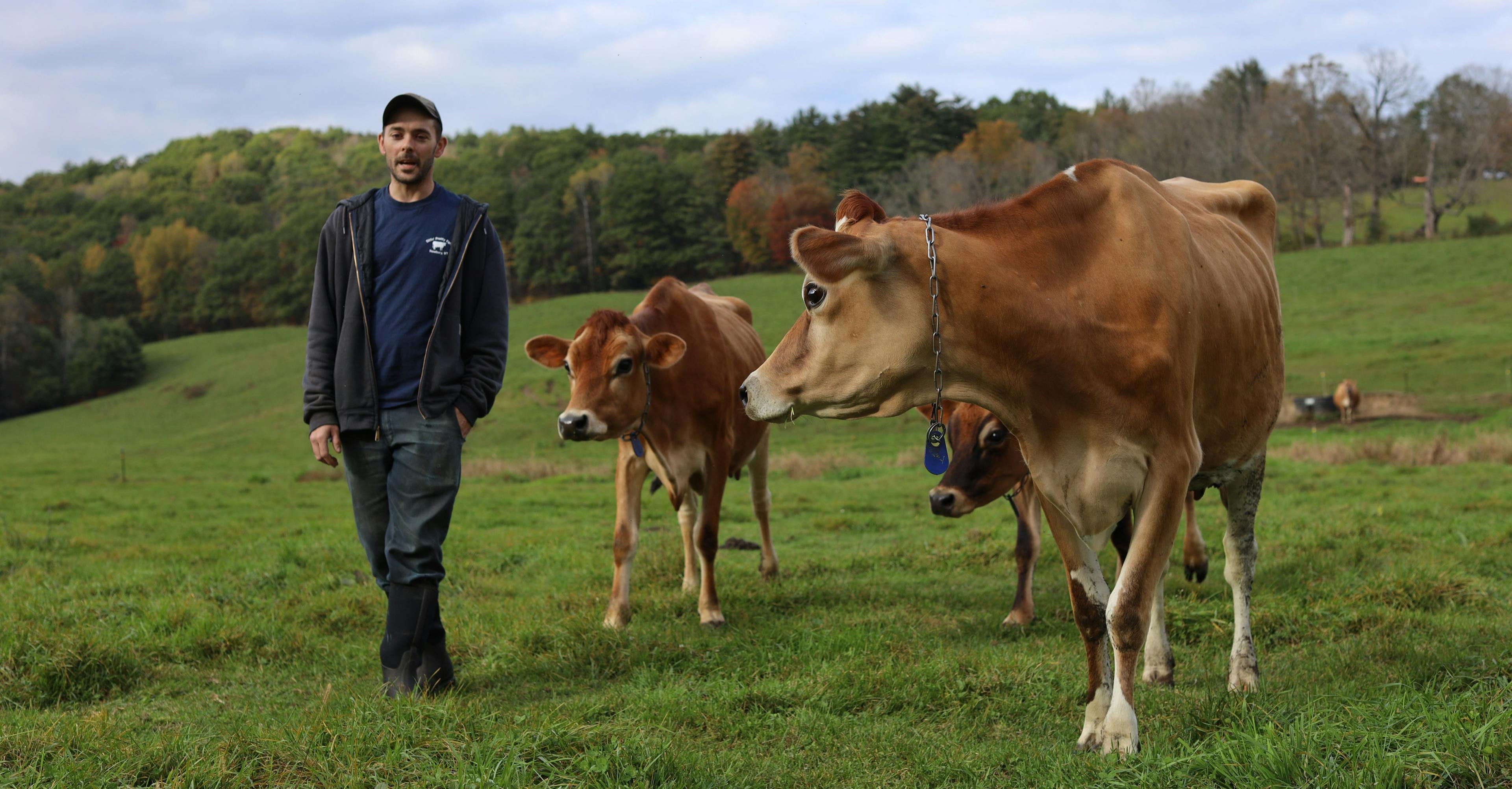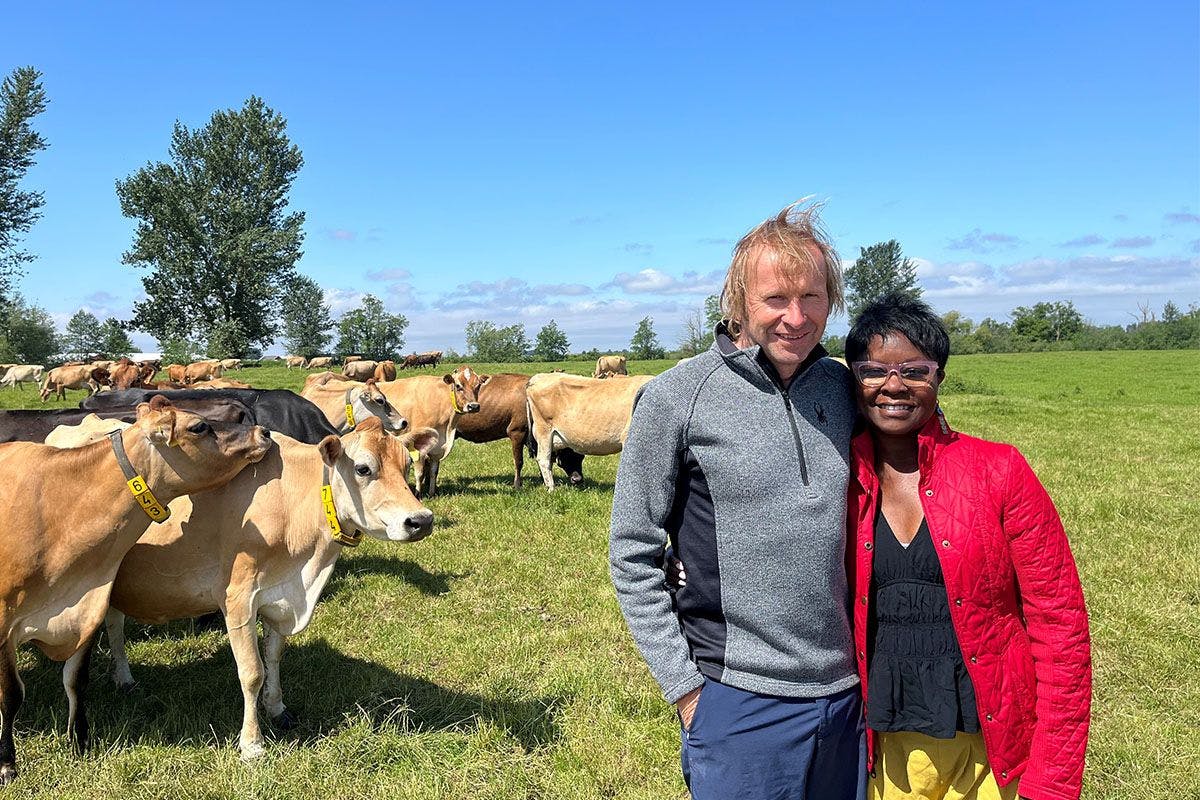
Rooted
1988 and 2023: Rad Comparisons from Year Farmers Form Cooperative
Organic Valley celebrated its 35th birthday this year and so many things have changed since then. But, believe it or not, so many things are the same.
Our commitment has always been to farming without the use of toxic chemicals and providing farmers a market for their products, including milk, eggs, produce and meat. That has not changed. Neither has our commitment to providing a stable and sustainable pay price to organic farmers.
Let’s flashback to what was going on in ’88, the year farmers founded the co-op, and see how that compares to 2023.
Farmers Gather to Create Co-op
1988: Organic Valley is founded under the name CROPP Cooperative (Coulee Region Organic Produce Pool). Former CEIEIO George Siemon was a pioneer in the organic movement. He and others invited people to gather at the Vernon County Courthouse in Wisconsin to discuss a way to create a sustainable pay price for farmers by producing quality food without the use of toxic chemicals. The momentum grew. Organic Valley picked up its first shipment of milk on July 12, 1988.
2023: What started as a small group of farmers getting together to start the co-op grew. Co-op membership is now at more than 1,600 farms. New farms continue to join, including 84 in 2023, and dozens the year before. We are now the nation’s largest farmer-owned organic cooperative, and one of the world’s largest organic consumer brands thanks to your support.

Each year Organic Valley farmers and employees from across the country gather for a meeting.
Changes at Rockefeller Center
1988: A ceremony is held at New York City’s Rockefeller Center to declare it a national landmark. More than 100 years ago, John D. Rockefeller Jr. had a vision to create a city within a city: a place where New Yorkers could surround themselves with art and motifs that celebrated the best of the human spirit. It is home to businesses, television studios, shopping, dining choices, artwork and architecture — you won’t typically find a cow or tractor there.
2023: Organic Valley takes over Rockefeller Center. That’s right, Organic Valley transformed Rockefeller Center’s Channel Gardens into a small farm in the big city with immersive experiences to enjoy during Climate Week. We erected a makeshift barn, brought in topiary animals (including a cow that passersby could milk), and parked a tractor right in the middle of Manhattan. Check it out: Small Farm in the Big City.

Organic Valley took over Rockefeller Center in New York in the fall.
Hot Hair and Shoe Trends in the ’80s
1988: Manes of fluffy hair, mullets, crimped locks, big bangs and flattops are all the rage. Nike introduces Air Jordan shoes, which quickly gain popularity. You won’t find many Organic Valley founders sporting ’80s hairdos and fancy shoes. Many co-op members prefer long hair and boots or no shoes. Take our former CEIEIO: In ’88 George was a long-haired farmer from rural Wisconsin.
2023: Unbelievably (and some would say surprisingly), mullets return. Hair trends also include buzz cuts, blowouts and light purple, pink and oyster gray-shaded locks. Air Jordans are still hot, along with Crocs. George is still a long-haired farmer living on his home farm.

George Siemon is shown in 2023, left, and in the early days of the co-op.
Where to Get Organic Food
1988: Back in the ’80s you’d have to go to a farm and haggle with a long-haired farmer like George to find products produced without toxic chemicals. If you raised and grew your own veggies and food, finding wholesome food was no big whoop.
2023: Organic food sales account for about 6% of total food sales in the U.S. Truly certified organic products must bear the USDA Organic seal, and unlike 30 years ago, products are available at numerous major retailers and online. U.S. organic retail sales increased by an average of 8% per year and surpassed $53 billion in 2020. Note: Organic data collection began in 2008.

Time’s Person of the Year
1988: While Time traditionally graces the cover of its magazine annually with a person of the year, its 1988 cover featured Planet of the Year “Endangered Earth.” The corresponding article is headlined “Planet of the Year: What on EARTH Are We Doing?” Organic Valley aligns with the decision. As land stewards, this certainly hits home.
2023: Taylor Swift is the first musician named Time magazine’s Person of the Year. How does Organic Valley feel? We take no official stance. However, there are a number of devoted Swifties among us at Organic Valley who use vacation time to attend her concerts ― music brings people together and spreads joy, so go Taylor!

Any Guesses at the Best-Selling Car?
1988: Ford has the top-selling truck and the top-selling car, the subcompact Escort, according to the Chicago Tribune. The Escort runs at an approximate amazing-for-the-time 28 miles per gallon, while many vehicles average 15 to 16 mpg. Vehicles have come a long way.
2023: Enter Tesla (the car — not to be mistaken with the 1980's hair band). For the first time, an all-electric vehicle — the Tesla Model Y — is the world’s best-selling car (final numbers not available at the time of this article). The car has a 123 miles per gallon equivalent (MPGe). What does this have to do with Organic Valley? Again, eco-friendliness. We pride ourselves on sourcing electricity for our owned facilities from 100% renewable energy. We have electric vehicle charging stations at our offices and continue to work toward carbon neutrality by 2050.
Dairy Farms in the U.S.
1988: Farmers struggle in the ’80s due to high interest rates, farm debt for land and equipment purchases soar, and the price of their goods plummet. Between 1930 and 1988, the number of dairy farms decrease from about 4.5 million to about 220,000, according to the U.S. General Accounting Office. President Ronald Reagan proclaims March 20, 1988, National Agriculture Day. “As a nation we are blessed deeply and in many ways. The agriculture that sustains us is truly one of those blessings,” he proclaims.
2023: The number of licensed U.S. dairy herds falls even more. There are fewer farmers but more milk, meaning small farms are closing their barn doors. When farms shut down, they rarely come back. Production shifts toward large farms, often with 5,000 or more cows, according to a USDA report.

Huftalen family farm, New York
Organic Valley does not believe farmers should have to go big or get out. We pride ourselves on the attention we can give our cows by keeping it small. Our farmers have an average dairy herd size of fewer than 80 cows, which is less than one-third the national average dairy herd size. Some farms have as few as a couple dozen cows.
While we shift to meet the needs of farmers, the mission of the cooperative is as relevant as ever. Farmers couldn’t make it in the ’80s because they had no control over the amount of money they made from their products. Organic Valley farmers remain in control of the co-op — each farmer has a voice. No matter the size of the farm, our farmer-members each have one vote.
With that, raise your Long Island iced tea (the popular cocktail of 1988) or today’s trending drink, a spritz cocktail, for a New Year’s toast. Better yet, raise a tall glass of Organic Valley milk and make a toast to another year of farm success stories.
Have a totally tubular new year!
An antique typewriter fanatic and chicken mom who treasures time outdoors admiring all that nature has to offer, Jennifer McBride is Rootstock’s editor. McBride spent 15-plus years as a journalist and newspaper editor before finding her niche with the nation’s leading organic dairy cooperative. Contact her at Rootstock@organicvalley.com.

















